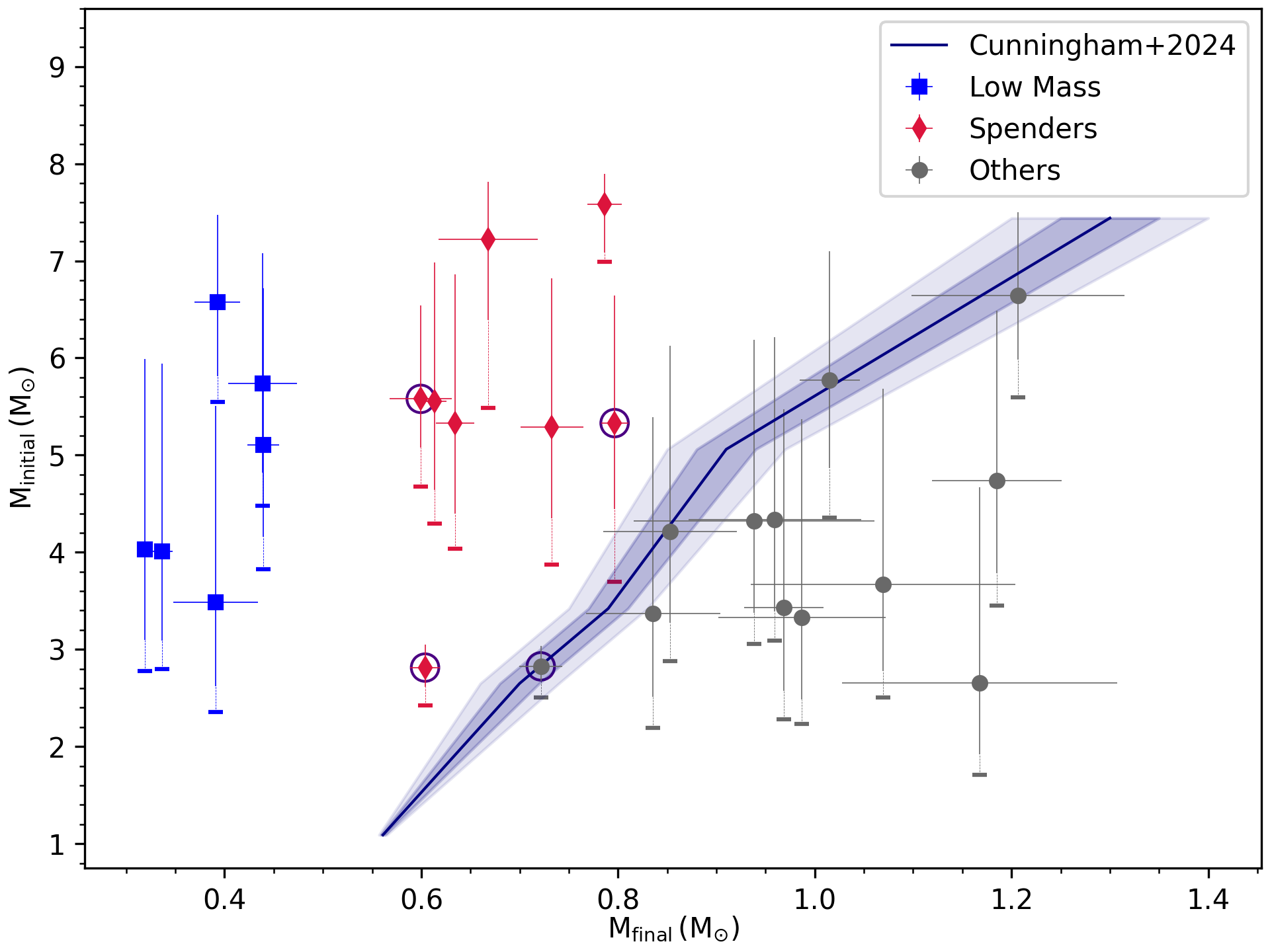The initial-to-final mass relation of white dwarfs in intermediate-separation binaries

We examine the applicability of the initial-to-final mass relation (IFMR) for white dwarfs (WDs) in intermediate-separation binary systems (~1 au), using astrometric binaries identified in open clusters from Gaia DR3. A careful analysis of the astrometric orbits and spectral energy distributions isolates 33 main-sequence (MS) stars with highly likely WD companions. By combining cluster age estimates, dynamically measured WD masses, and, where available, WD cooling temperatures, we derive progenitor masses for 26 WD candidates. Our analysis suggests the presence of two distinct WD populations: (i) low-mass WDs, likely shaped by binary interactions during the progenitor's red giant phase; and (ii) "spender" WDs, which experienced higher-than-expected mass loss and have progenitor masses above the IFMR predictions. The rest of the candidates, referred to as the "others," represent systems with inconclusive formation mechanisms. We suggest that at least some of these systems might be hierarchical triples, where the companion to the MS is a double WD or a double-WD merger product. However, follow-up studies are required to determine the nature of each case. These results highlight significant deviations from the IFMR derived for isolated WDs, emphasizing the role of binary evolution. Follow-up observations, particularly in the far-ultraviolet, are crucial for refining these findings and advancing our understanding of mass transfer processes and binary evolution pathways.
For further reading:
- Oren Ironi, Sagi Ben‑Ami, Na'ama Hallakoun, and Sahar Shahaf "The initial-to-final mass relation of white dwarfs in intermediate-separation binaries" 2025, The Astrophysical Journal, 982, 20